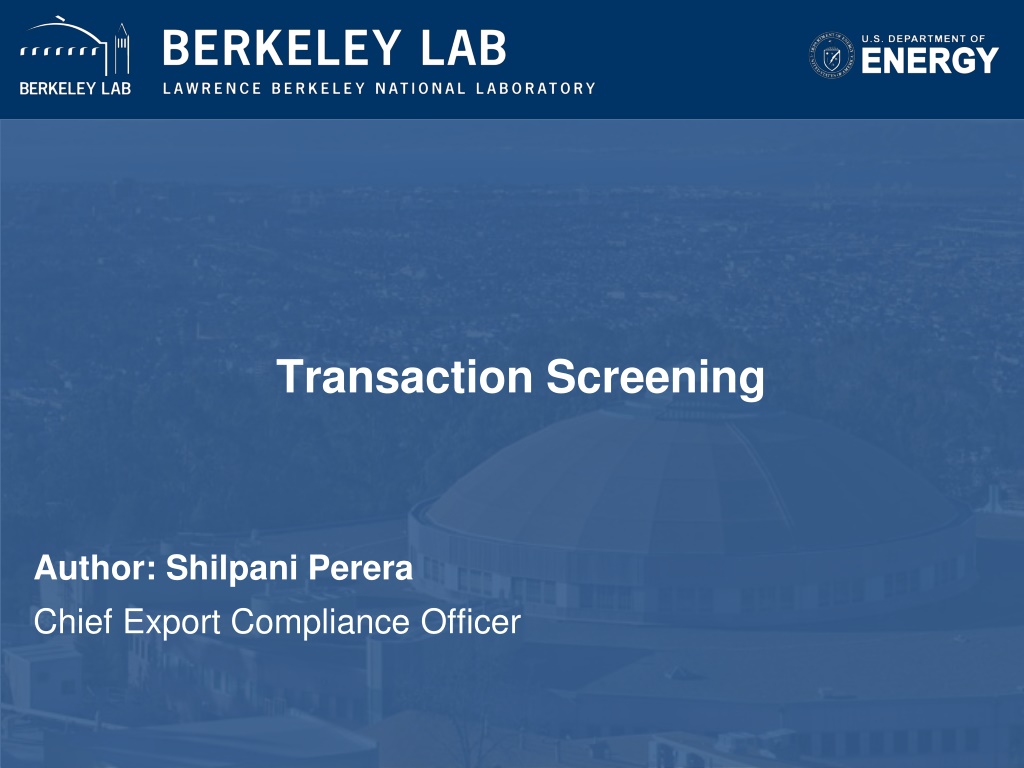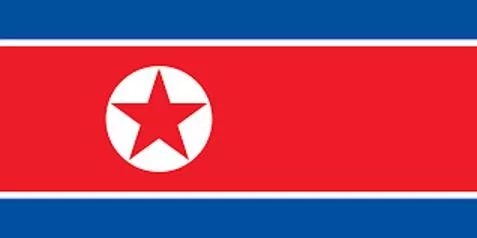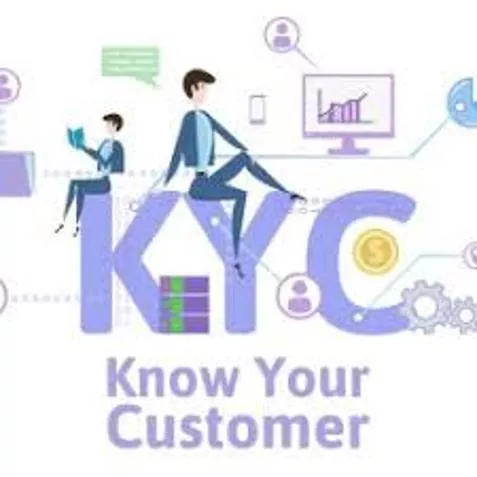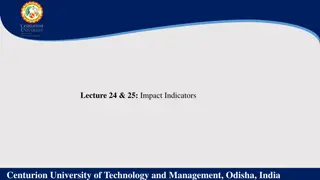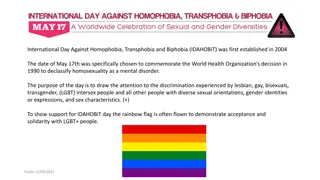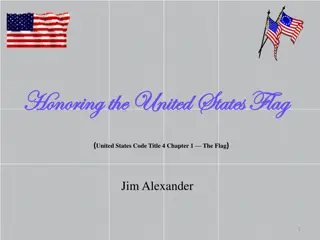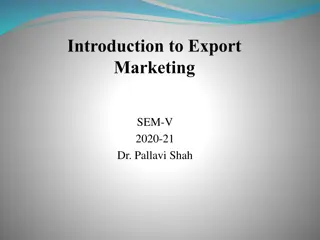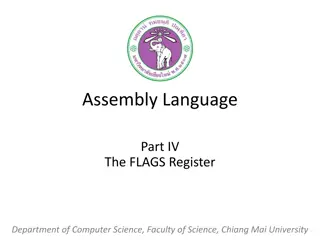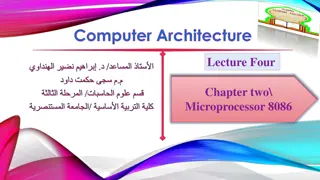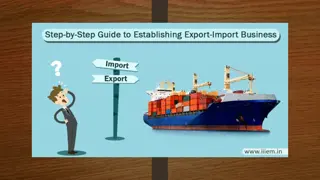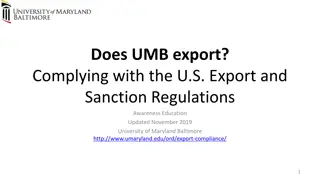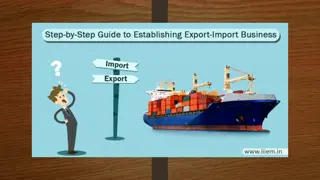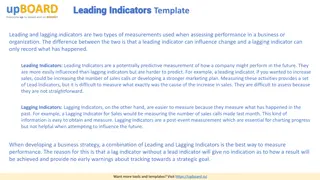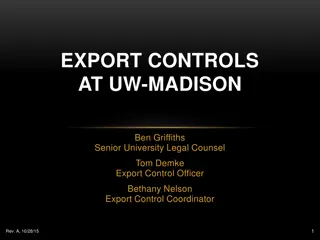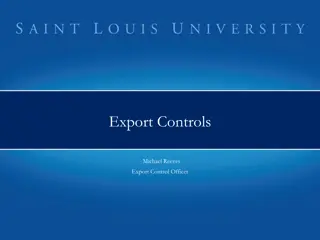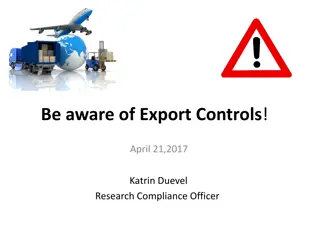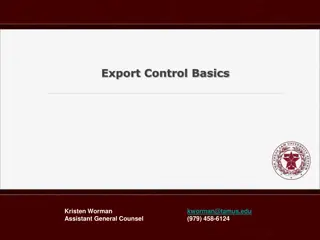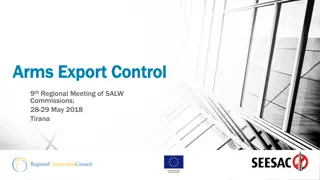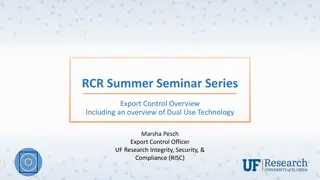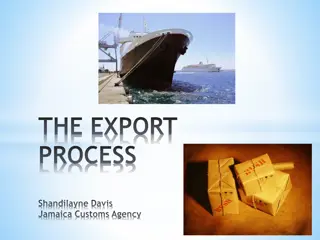Export Compliance Guidelines and Red Flag Indicators
Ensure compliance with export controls by screening for prohibited destinations, end-users, and end-uses. Know red flag indicators to identify suspicious export transactions. Catch all controls outline general prohibitions to prevent violations. Stay informed and vigilant to maintain export compliance.
Download Presentation

Please find below an Image/Link to download the presentation.
The content on the website is provided AS IS for your information and personal use only. It may not be sold, licensed, or shared on other websites without obtaining consent from the author. Download presentation by click this link. If you encounter any issues during the download, it is possible that the publisher has removed the file from their server.
E N D
Presentation Transcript
Transaction Screening Author: Shilpani Perera Chief Export Compliance Officer
Transaction Screening Ensuring Divisions do not engage in any activity that involves a prohibited destination, end-use, end-user, and screen for red flag indicators.
U.S. Export Controls Cover: What: What is being exported? Product-specific controls. Certain products or technology is prohibited to export without an export license, e.g., equipment modified for military applications Who: To whom is the export? End-user controls. Prohibited from engaging in activities with institutions or individuals listed on denied or sanctioned party lists. Why: Why does the customer want the export? End-use controls. If the research project will advance the military capabilities of a sanctioned country, we cannot undertake that project. Where: Where is the export going? Destination or transit country controls. Export to an embargoed or sanctioned country is prohibited or an export license may be required. e.g. Embargo: Cuba, Iran, North Korea, Sudan, Syria 3
Red Flag Indicators Things to Look for in Export Transactions Know Your Customer or Collaborator The entity name or its address is similar to one of the parties found on a sanctioned or denied party list. The entity or parties to the transaction is reluctant to offer information about the end-use of the item. The product's capabilities do not fit the entity's line of business, such as an order for sophisticated computers for a small bakery. The item is incompatible with the technical level of the country to which it is being shipped, such as semiconductor manufacturing equipment being shipped to a country that has no electronics industry. The entity is willing to pay cash for a very expensive item when the terms of sale would normally call for financing. The entity has little or no business background. The entity is unfamiliar with the product's performance characteristics but still wants the product. Routine installation, training, or maintenance services are declined by the entity. Delivery dates are vague, or deliveries are planned for out of the way destinations. A freight forwarding firm is listed as the product's final destination. The shipping route is abnormal for the product and destination. Packaging is inconsistent with the stated method of shipment or destination. When questioned, the entity is evasive and especially unclear about whether the product is for domestic use, for export, or for reexport. 4
Catch All Controls 10 General Prohibitions 1. Export and re-export of controlled items to listed countries. 2. Export and re-export from abroad of foreign-made items incorporating more than a de minimum amount of controlled U.S. content. 3. Export and re-export from abroad of the foreign-produced direct products based on U.S. technology and software. 4. Engaging in actions prohibited by a denial order. 5. Export or re-export to prohibited end-users or end-uses. 6. Export or re-export to embargoed destinations. 7. Support for proliferation activities. 8. In transit shipments and items to be unladen from vessels or aircrafts. 9. Violations of any order, terms and conditions. 10. Proceeding with a transaction with knowledge that a violation has occurred or is about to occur. 5
Elements of an Export Control Review 1. Restricted Party Screening 2. Determination of Export Control Status Not subject to Export Controls: Does not meet definition of Export , Release , Technology , Technical Data Meets definition of Fundament Research Appropriately released into the Public Domain Subject to Export Controls: Export Control Jurisdiction and Export Classification ITAR [USLM Category] EAR (ECCN) 10 Part 110 10 Part 810 OFAC 6
Elements of an Export Control Review 3. License Determination No License Required; Justification as to why License Required License Exception/Exemption General or Specific License 4. Pre or Post Licensing Activity Technology Control Plans General or Specific Guidance Destination Control Statements End Use/User Certifications Document Marking (Physical or Electronic) Contractual Clauses 7
Questions? Contact the Export Compliance Office @ exportcontrol@lbl.gov
